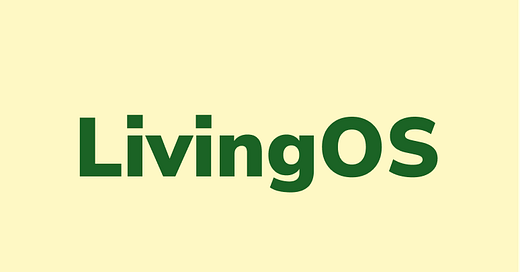Productive Creativity = Research + Ideation + Draft + Publish
When you begin to create consistently, you will realize that you are far more “productive” than you ever thought possible.
At the start of the pandemic, I shared my first productivity principle online. At that time, I had many messy ideas and the aspiration to publish something every day. A year later, I unlocked my creativity and cultivated a new understanding of productivity. More interestingly, I found a growing sense of resistance against organizing my digital notes.
While I love tidying things up, my newfound creativity made me realize that organizing is not the most productive way to spend my time.1 Instead of getting busy with tagging or highlighting my notes, I could be writing about new experiences, learnings, and philosophies.
It’s tough to examine this complicated relationship with productivity. As I look deeper, I realize that I inherently believe “productive” is good and “not productive” is bad. Maybe it’s time to revisit the Internet circle that shares my passion for productivity. I want to reconnect with my younger self, who had so much courage, wonder, and energy to start it all.
Two months ago, I returned to Building A Second Brain and taught my creative workflows for the first time.

More importantly, I want to help productive-minded people like me realize that you are far more “productive” than you ever thought possible when you begin to create consistently.
Research: I like to collect materials that make me pause and think. Sometimes I use Readwise to resurface the highlights. Sometimes I just let them quietly sit in my digital library. Once the notes are taken, I’d consciously retire them into my subconscious and redirect my brainpower to new ideas that demand more attention.
Ideate: I only act on ideas when I receive many reader questions on a specific topic that I want to get more clarity on. This means that I don’t act on most of the notes, but once I do, it only takes a few hours to turn the bullets into the first draft. This is the stage when I genuinely make sense of the notes I’ve collected and create something tangible for the world.
Draft: Once I have a draft, I’ll proofread them a few times and share them with fellow writers. I’ve been a part of many writing groups, and Foster is the one that constantly provides timely, insightful edits from people who have mastered the craft of online writing. Through the group, I’ve improved a ton and made many friends along the way.
Foster was kind enough to let the LivingOS community skip the line and jump straight to the interview. If you are interested in joining this awesome community and getting my feedback on your next writing project, sign up here.
Publish: People often ask me how long it takes me to write a piece. While it may be hard to calculate the total time from research, the actual writing process only takes a week. Most importantly, I only write when I’m in love with the idea. This makes each piece a joy to work with, and they are all labor of true love.
To a creative life,
Charlene
This piece is inspired by this beautiful timelapse. I hope you will bring forth your unique gift and share your values with the world.
Special thanks to Chris Liu, Angelo, Stew Fortier, Pasquale D'Silva, and Julie Trelstad for providing feedback on early drafts. Thanks to María Aldrey, who brought this to my awareness. Plus, if I perfectly manage my life, I’m signing up to manage a task forever.





All of this is incredibly useful. Thank you so much for posting it!